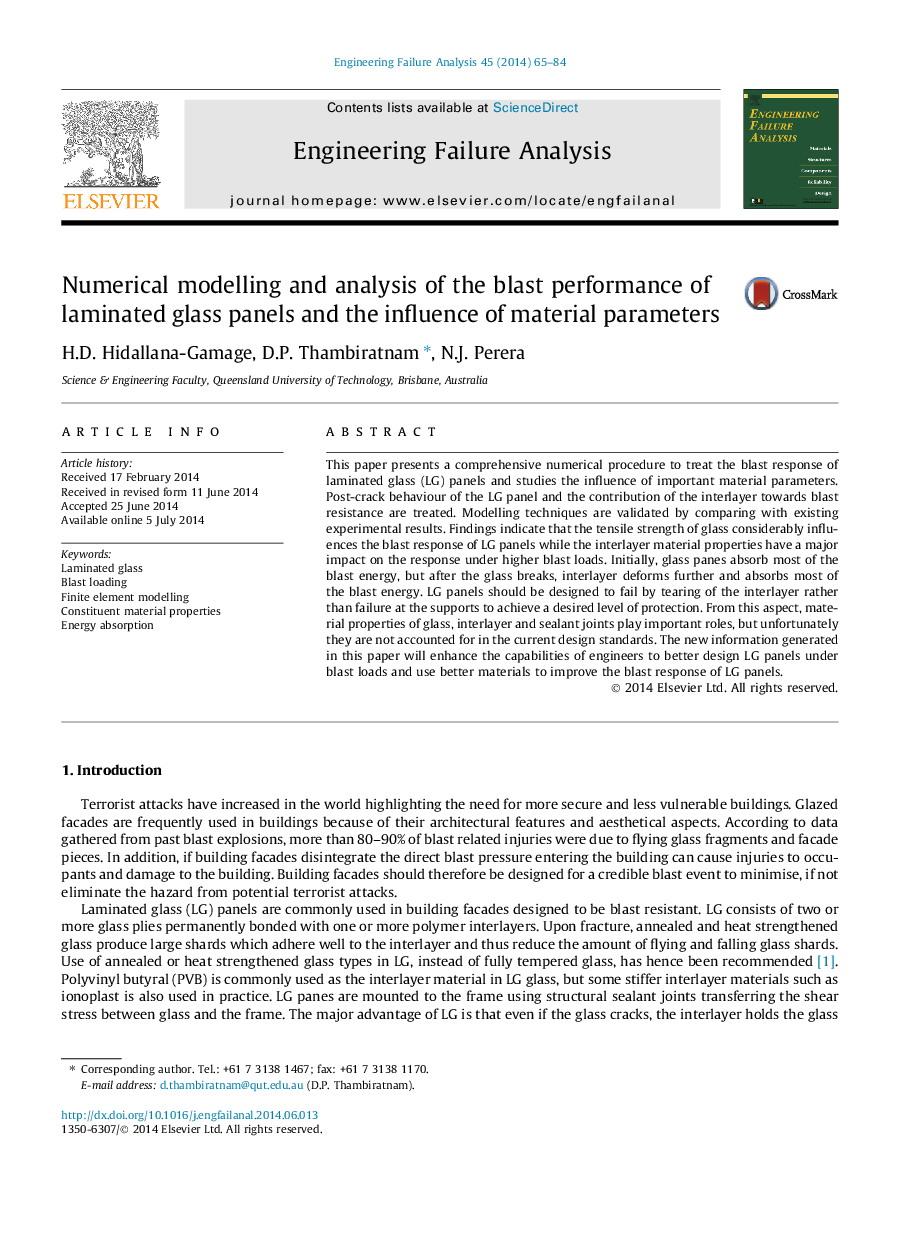| Article ID | Journal | Published Year | Pages | File Type |
|---|---|---|---|---|
| 769599 | Engineering Failure Analysis | 2014 | 20 Pages |
•Numerical procedure for blast response of laminated glass (LG) panels is presented.•Numerical models can simulate the post-crack behaviour of LG under blast loads.•Parametric study on effects of constituent material properties was carried out.•Tensile strength (T) of glass influences the blast response of LG panels.•Interlayer material has major impact when under severe blast loads.
This paper presents a comprehensive numerical procedure to treat the blast response of laminated glass (LG) panels and studies the influence of important material parameters. Post-crack behaviour of the LG panel and the contribution of the interlayer towards blast resistance are treated. Modelling techniques are validated by comparing with existing experimental results. Findings indicate that the tensile strength of glass considerably influences the blast response of LG panels while the interlayer material properties have a major impact on the response under higher blast loads. Initially, glass panes absorb most of the blast energy, but after the glass breaks, interlayer deforms further and absorbs most of the blast energy. LG panels should be designed to fail by tearing of the interlayer rather than failure at the supports to achieve a desired level of protection. From this aspect, material properties of glass, interlayer and sealant joints play important roles, but unfortunately they are not accounted for in the current design standards. The new information generated in this paper will enhance the capabilities of engineers to better design LG panels under blast loads and use better materials to improve the blast response of LG panels.
